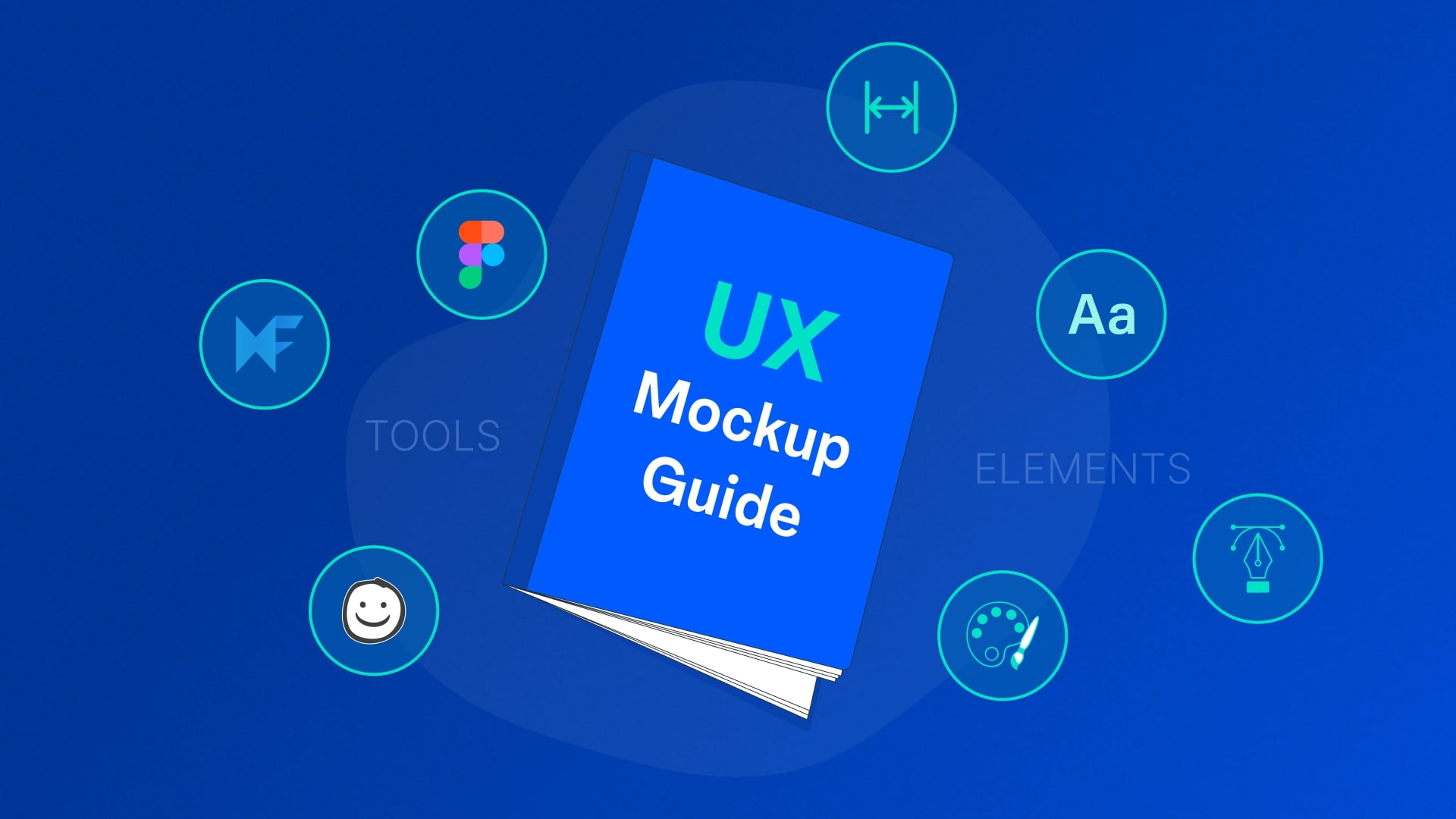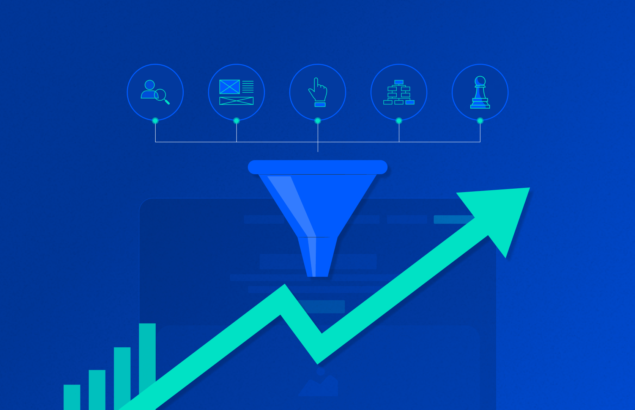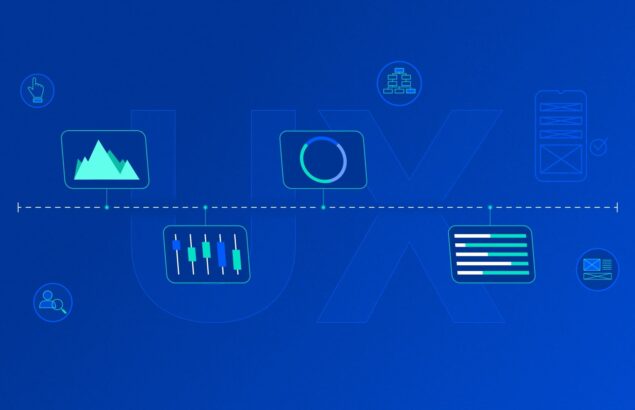Mastering UX Mockup: A Comprehensive Guide
Posted by Ravi Talajiya on 29 Jan, 2025

Do you want to design UX mockups? Or do you want to improve the aesthetics of your final product? Or want to know what are the best design tools for creating UX mockups? Don’t worry. We have prepared a detailed blog about UX mockups. It also contains the best practices to follow while designing UX mockups. Let’s explore.
This is why UX mockups are critical. According to PR Newswire, 50% of users judge a website by its design, and multiple studies indicate that 90% of users abandon a poorly designed website. You can avoid this by simply introducing UX mockups in the design process. UX mockups are widely used by the companies in the design process to make sure the final product has the best design, but what are UX mockups? Let us start by understanding what it is.
In this guide, we’ll explore:
- What UX mockups are and why they matter
- How they differ from wireframes and prototypes
- Best practices for creating impactful mockups
- The top tools for designing UX mockups efficiently
What is UX Mockup?
A UX mockup is a high-fidelity and static visual representation of how the final product will look. It includes iconography, color, typography and overall style of the product. Mockups are established to understand how users will interpret the brand by its visual identity. UX mockup might sound similar to wireframing and prototyping, however, we should not get confused between these three. Let’s understand the difference between them.
Difference Between Wireframes, Prototypes and Mockups
Wireframes are the basic and low-fidelity representation of the initial product. However, it contains all the essential elements that are going to get featured in the final product. Wireframes are made for designers to have a clear outline of the information architecture and a wireframe can either be drawn by hand or wireframing tools.
Whereas, Prototypes can be considered as the final stage of the design process. It is a working model of the final product whether it is a web page or app. The main focus for the development of prototypes is to test the user journey and understand how users will do a certain task. So, designers can pinpoint the potential issues with interaction flow.
If wireframe is the initial stage and prototype is the final stage of product design then when does the UX mockups come in? The UX mockups come between the wireframing and prototyping stage. It only shows detailed and static visual representation of the final product. It offers a more realistic perspective to reveal problems that aren’t so visible during wireframing and prototyping.
Role of Mockups in the Design Workflow
Designing mockups before developing a prototype or final UX design can play a crucial role as it will help designers avoid costly redesigns. You can even build mockups to interact with users allowing designers to remove guess work in the design process and completely design and iterate on user feedback.
Visualize the Design
You will never know the areas of improvement in the final product or how users will react to it if you don’t develop mockups. It gives you an idea about how the layouts, typography, color scheme of the final outcome might look like.
Gather Feedback
Feedback is the most important part of designing a UX mockup. It helps in improving the user experience at a low-cost. You can gather feedback from stakeholders and users to fulfill their expectations and demands in the final product.
User Testing
As we know UX mockups are very cost-effective. You can develop multiple of them with different typography, layouts, color scheme and test with users to know which one is the most preferred.
What are the Type of UX design mockups?
Even with the same end goals, designers have different opinions on creating UX mockups. This is mostly based on their requirements. Some of the designers choose to create the whole UX mockup by themselves using graphic design software and codes, whereas some of them use mock-up tools. Let’s study all types of UX Mockups.
Graphic Design Software
In the era where most of the designers use mockup tools to quickly design UX mockups, some designers still use graphic designers software to create it. It is mostly because of their very specific requirements that can’t be fulfilled with mockup tools. However, you have to recreate the whole mock up in another app to create a prototype and that’s a disadvantage.
Mockup Tools
Mockup tools are the most preferred way of designing UX mockups. They make the whole process much simpler and quicker. It has built-in libraries to help you get design components you need for your mockup. You can also drag and drop components from your system to keep up with the flow.
Codes
Technically proficient designers mostly use HTML, Javascript, and CSS to build UX mockups rather than mockup tools and graphic design software. It gives them freedom of creating design elements that can elevate UX mockup’s aesthetics. However, it has a disadvantage - it is very time consuming to build, make changes and fix errors.
Elements of a UX Mockup
The elements you use in designing a UX mockup can determine its success. Because, they have the ability to mockup look simple and intuitive or messy and complex. A messy and complex UX mockup not only drives the users away but also makes the job for designers building a prototype or final product tough. It will also consume a lot of time. Let’s understand some important elements of a UX mockup.
Content Layout
Once the wireframe is prepared designers replace boxes, icons and lines with actual content like text, UI components, images and more. Their main focus is to keep the UX mockup simple, easy to understand and navigate. To do this they often use content layout patterns like F or Z and it also helps them fit all the elements within the screen constraints.
Color & Contrast
One of the most important elements of UX mockup is color and contrast. They can decide whether the users will spend time on your product or not. Color is really important for content grouping, hierarchy, accessibility and branding whereas contrast can improve the usability and accessibility.
Typography
Typography can improve or reduce the readability of the UX mockup, based on how efficiently you implement it. A bad typography can draw the users away from your website or app. Mockups allow designers to visualize and improve typography according to the context of the user interface, overall maintaining the structural consistency.
Spacing
White space and spacing always play a crucial role in improving the legibility of the UX mockup which will lead to a better final product. Designers often use a 4-point spacing system to maintain consistency throughout the design. It helps them reduce clutter and improve engagement rates.
Best Practices for Creating UX Mockups
Developing mockups is not an easy job. You have to consider many aspects while designing them. The best approach while developing UX mockups is that you should consider both your and your user’s point of view to get the best outcome. Here’s the list of the best practices for creating UX mockups that will help you create great mockups.
Start with a wireframe
The best way to start creating UX mockups is choosing a great wireframe. It will give you a quick start. You will be able to quickly visualize the flow you want to implement in your product. And then it will open the gates for designers allowing them to ideate on user feedback and insights.
Choose the Correct Fonts
What’s the point of developing a great interface if users can’t read what’s written in there? Make sure to choose the font that doesn't look messy, because messy fonts can reduce the readability. Also ensure that the fonts are looking good on every device and are not an outcome of cognitive bias.
Preview distinct-sized devices
Users are now equipped with devices like laptops, smartwatches, tablets, smartphones, etc. and none of them have the same screen size. While developing you need to ensure that the UX mockup fits the screen of all sizes. Once developed you can test it on diverse-sized devices to check the areas of improvement.
Leverage Proper Design Tools
There are two parts of leveraging design tools: the first one is choosing proper design tools and the second one is maintaining consistency with the same designing tools. This is because when you choose a random design tool without proper research you might face consistency problems in the design process. And that will reduce the quality of UX mockups.
Top Tools For Creating UX Mockups
Choosing tools for creating UX mockups is one the most important steps in the design process, because it can determine how the rest of the design process will go. And a tool not fit for your design process might reduce the quality of your UX mockup overall, decreasing the aesthetics of your final product. According to online reports, 52% of the users don’t return to a website because of poor aesthetics. You surely don’t want to lose that percentage of users. To avoid such situations you should leverage the best design tool for creating UX mockups. Here’s the list of best design tools.
Balsamiq
Balsamiq should be your first choice if you want to start quickly. It provides low-fidelity mockups focusing on removing bad interfaces to make the process of idea generation and development of concepts effective and quick.
Pros:
- Balsamiq’s low-fidelity mockups speed up the process of developing ideas.
- It has a team communication feature to help teams share ideas and feedback quickly.
Cons:
- Limited capabilities for designing high fidelity mockups.
- It can’t be used for projects requiring detailed designs or final presentation.
Price:
Free 30 day trial then $12/mo for businesses and $18/mo for enterprises.
UXpin
UXpin is a great design tool and software that supports readily reusable components allowing designers to quickly create wireframes, mockups and prototypes.
Pros:
- It allows the import of design components from other design tools to enhance the workflow.
- Improves the product design process by facilitating collaboration among teams.
Cons:
- Not an ideal choice for creating simple static mockups.
Price:
It's free for small and medium sized businesses who want to build interactive prototypes. Its pricing starts from $6 per editor/mo and goes up to $119 per editor/mo which is after getting a 20% discount on annual billing.
Mockflow
One of the most useful design tools when you want your teams to collaborate for the development of wireframes and mockups. It has different features like preview, reusable components, editors, etc.
Pros:
- Allows teams to work efficiently with a real-time collaborative approach during the design process.
- It is a cloud based platform that makes accessibility and sharing easier.
Cons:
Lack of advanced prototyping features
Price:
You can start with basic features for free and if you need advanced features the premium will cost $14/mo. For business the pricing is $45/mo and for enterprise it is $160/mo.
Conclusion
Now, you understand everything about UX mockups. UX mockups are the bridge that fills the gap between the idea and reality. And you also know how UX mockups are different from wireframes and prototypes. Now designers quickly create mockups due to constant advancements in the design industry, but you need to make sure that they follow the best practices while designing mockups. To get the best results your designers must choose the design tools that suit your design process the best.
But the question arises where to hire the best designers from? We have the answer to that question too. You can hire TheFinch Design. We provide the best designers who make sure the design process remains ethical with help of best practices and have expertise in using top design tools. For more details contact us.
Index
Would you like to Listen?
Related Articles
Get the inside scoop on the latest UX industry happenings and trends from our expert UI UX professionals.


